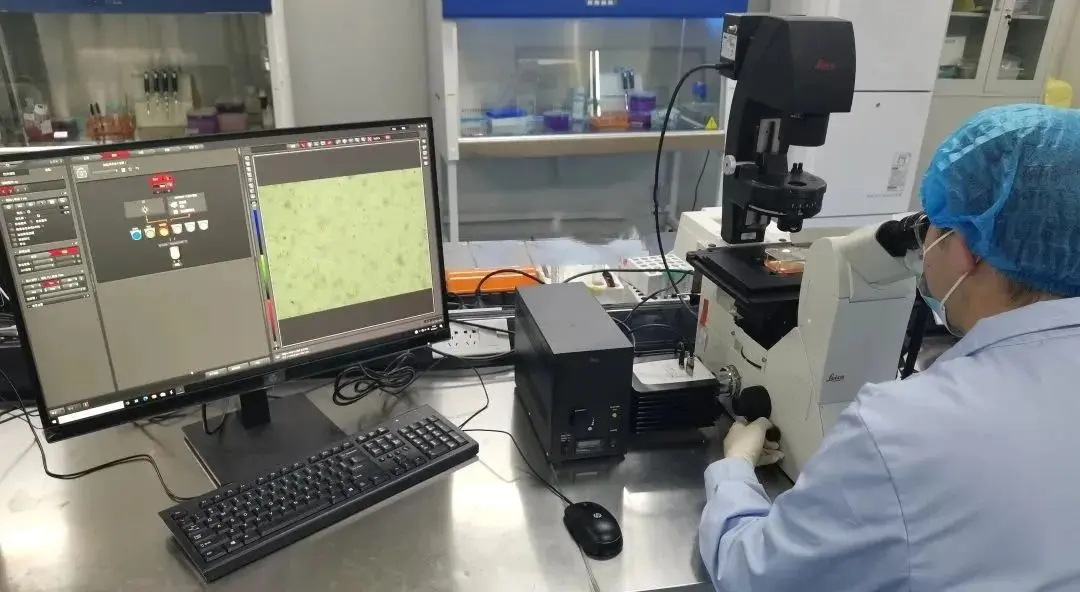
Oral Mucosal Irritation Test ISO 10993-10
What is the Oral Mucosal Irritation Test?
The oral mucosa is soft, moist, and susceptible to damage. Oral care products and medical devices that come into temporary or prolonged contact with the oral mucosal tissues must be evaluated for their potential to cause irritation. The oral mucosal irritation test simULates the effect of oral care products and medical devices on the mucosa in vitro. This is done by assessing tissue viability to determine the presence and intensity of irritation caused by these products.

Considerations for the Oral Mucosal Irritation Test
The oral irritation test should be consideRED only for materials expected to come into contact with oral tissues (e.g., toothpaste, mouthwash, oral care solutions, dentures) and only when safety data cannot be obtained by other methods.
Basis for Oral Mucosal Irritation Testing
- iso 10993-10: Biological evaluation of medical devices - Part 10: Tests for irritation and skin sensitization
- GB/T 16886.10-2017: Biological evaluation of medical devices - Part 10: Tests for irritation and skin sensitization (Chinese Standard)
These standards recommend methods to evaluate the potential of sample solutions/extracts to cause oral mucosal irritation.
Materials to be Excluded from Testing
1. Any materials known to be skin or eye irritants.
2. Materials with a pH ≤ 2.0 or ≥ 11.5 should not be tested further.
These materials can be labeled as potential oral tissue irritants. In exceptional cases where further risk characterization/assessment is required, testing may still be necessary despite known irritation potential or extreme pH values. Such cases must be justified and documented.
Test Materials
When conducting and interpreting irritation/sensitization test data, factors such as the nature, extent, frequency, duration, and conditions of contact with the human body should be considered. One of the key factors is the preparation of test materials. Extraction conditions are based on generally feasible and standardized methods, typically using more stringent conditions than those of product use. Extraction should be carried out under one of the following conditions:
- (37±1) °C for (72±2) hours;
- (50±2) °C for (72±2) hours;
- (70±2) °C for (24±2) hours;
- (121±2) °C for (1±0.1) hour.
Note: Due to manufacturing processes, the surface properties of many elastomers may differ from those of general bulk materials.
Both polar and non-polar solvents should be used for extraction. Examples of extraction media:
- Polar extraction media: Water, physiological saline
- Non-polar extraction media: Fresh refined vegetable oils meeting pharmacopoeial quality standards (e.g., cottonseed oil or sesame oil)
- Other extraction media: Ethanol/water, ethanol/physiological saline, polyethylene glycol 400 (diluted to physiological osmolality), dimethyl sulfoxide
Animals and Management
Healthy, young adult golden hamsters of the same strain, regardless of sex, should be used. Animals should acclimate to their environment and be housed according to ISO 10993-2.
Additionally, animals should be fitted with a suitable collar (3mm~4mm wide) to allow normal feeding and breathing while preventing the removal of the cotton ball from the oral cavity. Animals should be weighed daily during the 7-day test period. Adjust collars if necessary based on weight loss. Remove any animals from the test if significant weight loss continues.
At least three animals should be used initially to evaluate test materials.
Note: It may be appropriate to test additional animals with corresponding negative control materials or blank solutions.
If initial reactions are inconclusive or unclear, consider conducting a retest.
Email:hello@jjrlab.com
Write your message here and send it to us
 Differences Between FDA and LFGB for Food Contact
Differences Between FDA and LFGB for Food Contact
 Process and Precautions for Amazon CPC Certificate
Process and Precautions for Amazon CPC Certificate
 E-mark Certification Testing Service Laboratory
E-mark Certification Testing Service Laboratory
 Amazon ISO/IEC 17025 UL Testing Service Laboratory
Amazon ISO/IEC 17025 UL Testing Service Laboratory
 How to get CE Certification for Lighting Products?
How to get CE Certification for Lighting Products?
 CE Certification Standards & Process for Elect
CE Certification Standards & Process for Elect
 Japan METI Registration & Japanese Agent Servi
Japan METI Registration & Japanese Agent Servi
 Temperature Shock Test (IEC 60068-2-14:2009)
Temperature Shock Test (IEC 60068-2-14:2009)
Leave us a message
24-hour online customer service at any time to respond, so that you worry!




